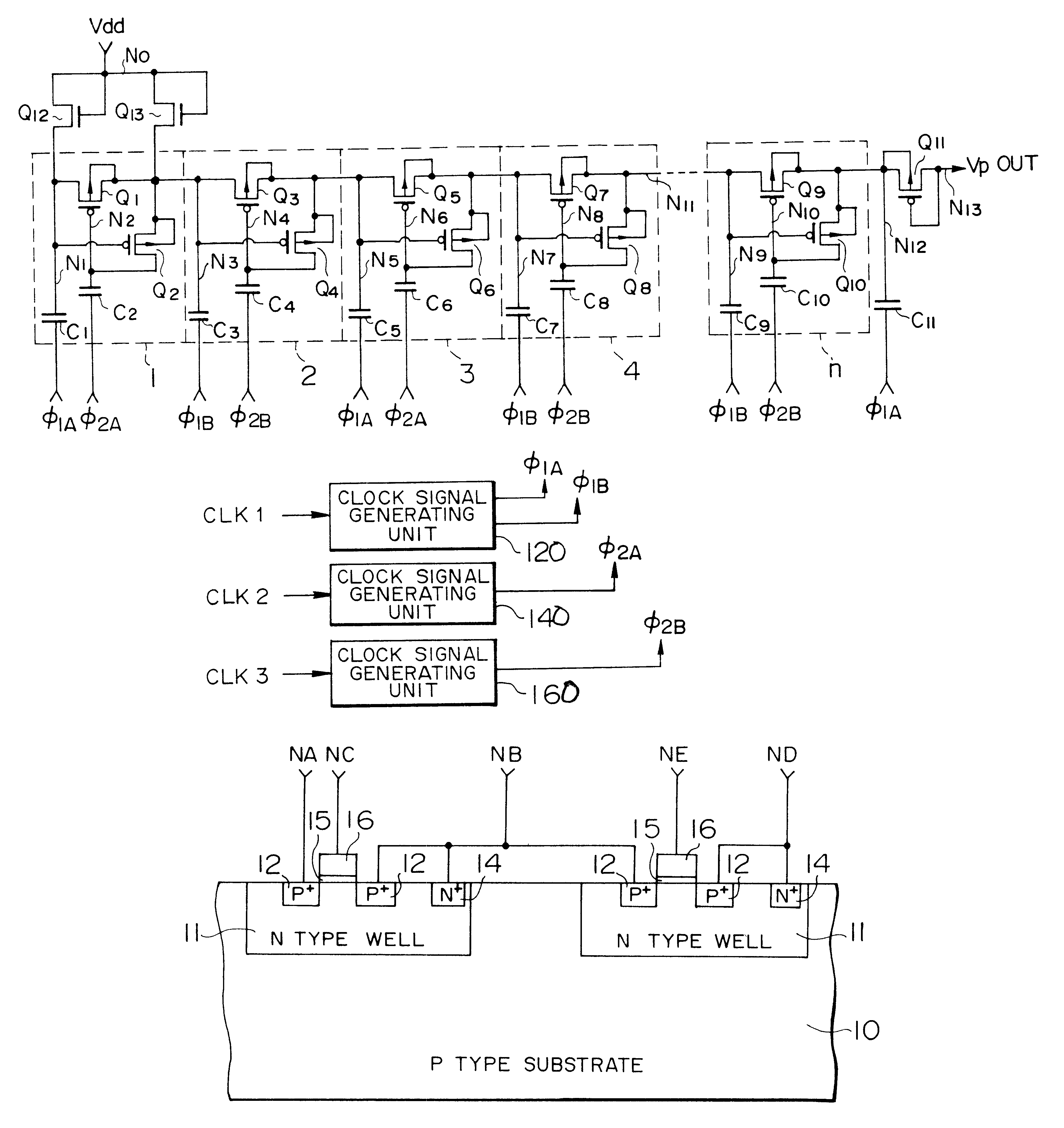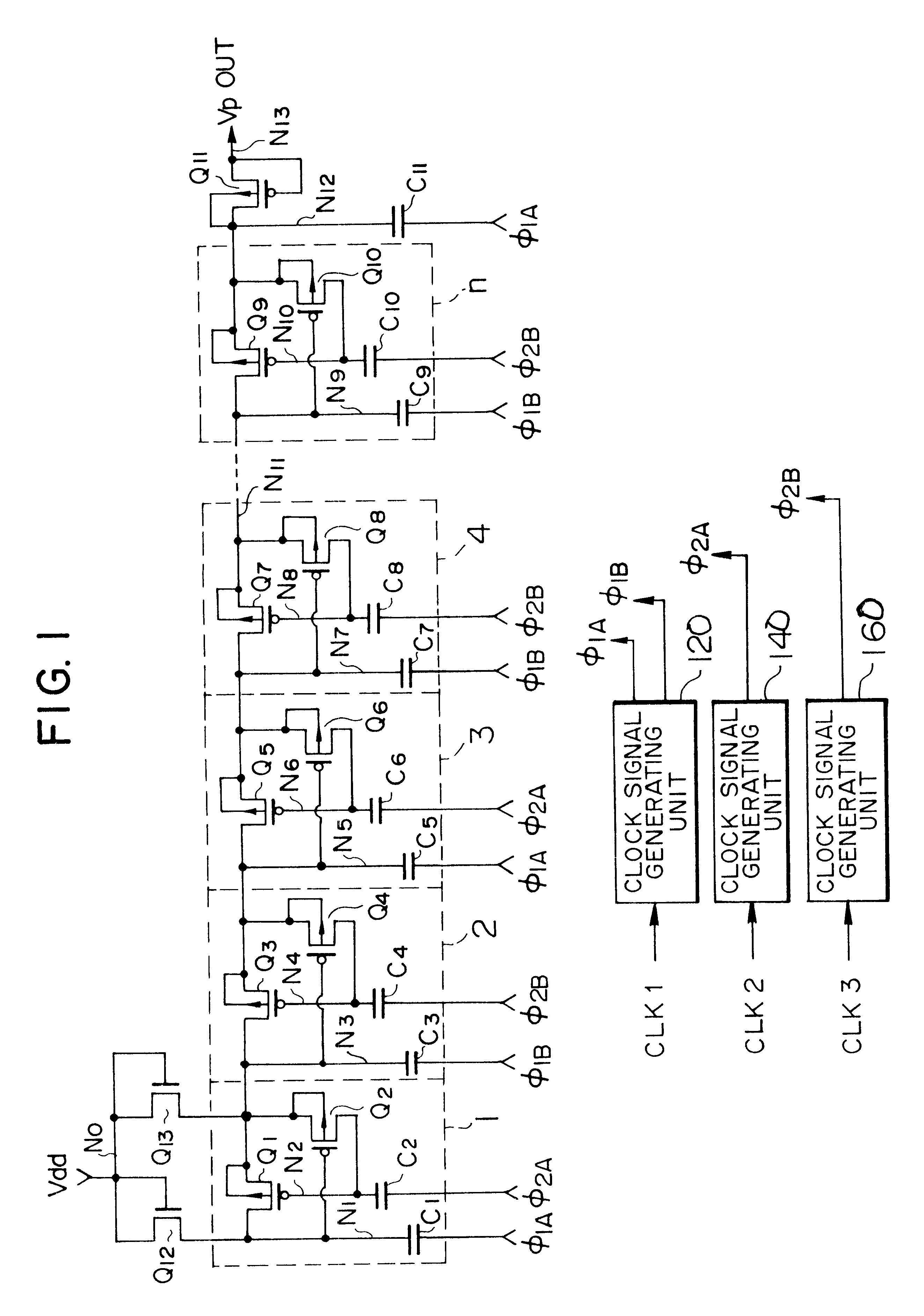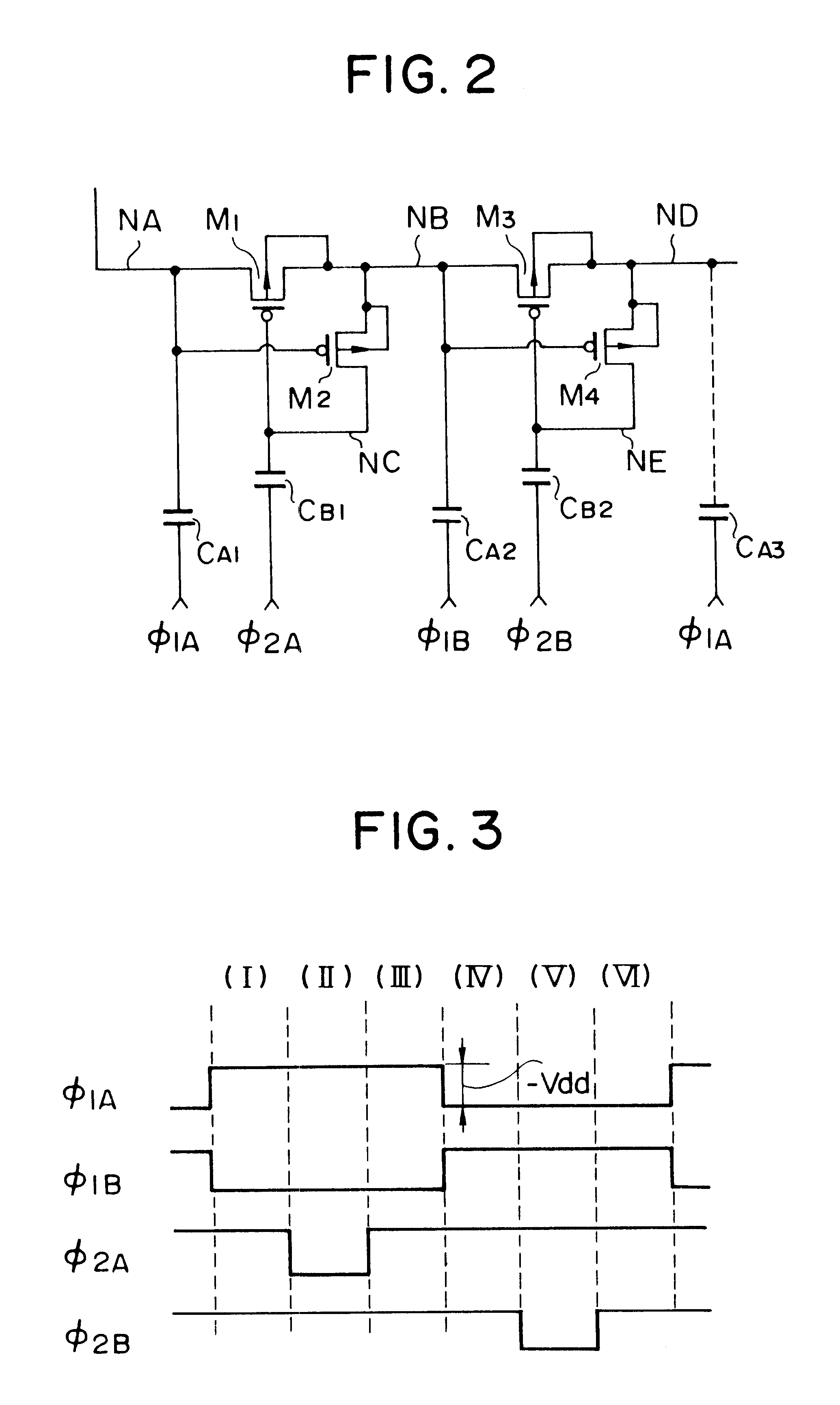Semiconductor booster circuit having cascaded MOS transistors
a booster circuit and mos transistor technology, applied in the direction of electric variable regulation, process and machine control, instruments, etc., can solve the problems of complex manufacturing process, inability to suppress the increase of the threshold voltage vt due to the substrate effect, and inability to obtain the desired output voltage vsub>pout /sub>, etc., to achieve the effect of reducing the threshold voltage of the mos transistor and reducing the level of the output voltag
- Summary
- Abstract
- Description
- Claims
- Application Information
AI Technical Summary
Benefits of technology
Problems solved by technology
Method used
Image
Examples
first embodiment
[0077]the present invention will hereinafter be described in detail with reference to FIGS. 1 to 10.
[0078]FIG. 1 shows a configuration of a semiconductor booster circuit according to the first embodiment of the present invention.
[0079]As shown in FIG. 1, n elements of P-channel MOS transistors Q1, Q3, Q5, Q7, . . . , Q9 are connected in cascade to configure a booster circuit having n stages. Substrate portions of the transistors Q1, Q3, Q5, Q7, . . . , Q9 are electrically insulated from one another and also are connected to source terminals of the transistors Q1, Q3, Q5, Q7, . . . , Q9, respectively. In addition, to drain terminals (represented by nodes N1, N3, N5, N7, . . . , N9) a clock signal φ1A or φ1B which is shown in FIG. 3 is inputted through respective capacitors C1, C3, C5, C7, . . . , C9.
[0080]In addition, to gate terminals (represented by nodes N2, N4, N6, N8, . . . , N10) of the transistors Q1, Q3, Q5, Q7, . . . , Q9, a clock signal φ2A or φ2B which is shown in FIG. 3 i...
second embodiment
[0136]Next, the description will hereinbelow be given with respect to a semiconductor booster circuit according to the present invention with reference to FIGS. 7 and 8.
[0137]FIG. 7 is a circuit diagram showing a configuration of the semiconductor booster circuit according to the second embodiment of the present invention.
[0138]In FIG. 7, n elements of P-channel MOS transistors Q30 to Q34 are connected in cascade to configure a booster circuit having n stages. Substrate portions of the respective transistors Q30 to Q34 are electrically insulated from one another, and also gate terminals and the substrate portions are connected to respective source terminals N31 to N35. Then, a clock signal φA or φB which is shown in FIG. 8 is inputted to the source terminals N30 to N35 through capacitors C30 to C35, respectively.
[0139]In the booster circuit of the present embodiment, as an inputted signal, the power supply voltage Vdd is inputted from a source terminal N37 of a P-channel MOS transis...
third embodiment
[0145]Next, the description will hereinbelow be given with respect to a semiconductor booster circuit according to the present invention with reference to FIGS. 9 and 10.
[0146]FIG. 9 is a circuit diagram showing a configuration of the semiconductor booster circuit according to the third embodiment of the present invention.
[0147]In FIG. 9, N-channel MOS transistors Q40 to Q44 are connected in cascade to configure the booster circuit having n stages. Substrate portions of the respective transistors Q40 to Q44 are electrically insulated from one another, and also the substrate portions and gate terminals are connected to respective source terminals N40 to N44. Then, the clock signal φA or φB which is the same as that shown in FIG. 8 is inputted to the terminals N40 to N44 through capacitors C40 to C44, respectively.
[0148]In the booster circuit according to the present embodiment, the power supply voltage Vdd is inputted as an input signal from a source terminal N47 of an N-channel MOS ...
PUM
 Login to View More
Login to View More Abstract
Description
Claims
Application Information
 Login to View More
Login to View More - R&D
- Intellectual Property
- Life Sciences
- Materials
- Tech Scout
- Unparalleled Data Quality
- Higher Quality Content
- 60% Fewer Hallucinations
Browse by: Latest US Patents, China's latest patents, Technical Efficacy Thesaurus, Application Domain, Technology Topic, Popular Technical Reports.
© 2025 PatSnap. All rights reserved.Legal|Privacy policy|Modern Slavery Act Transparency Statement|Sitemap|About US| Contact US: help@patsnap.com



